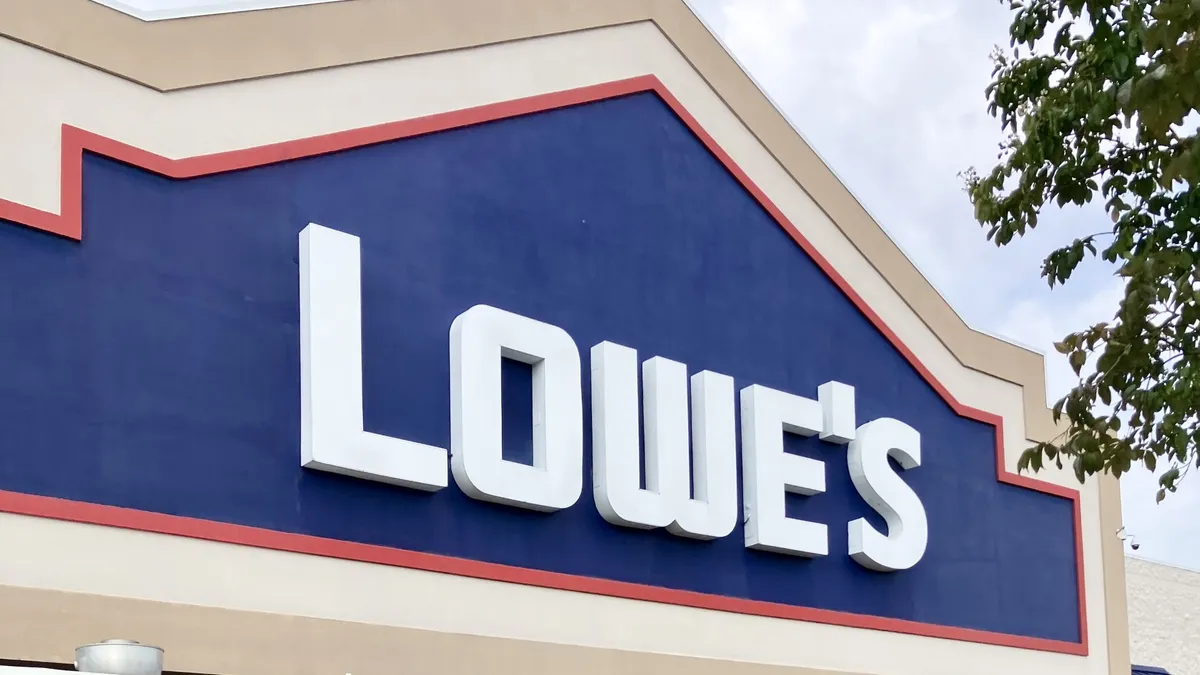In a public treatise last week outlining steps Macy’s Inc. should take in order to boost shareholder value, investment firms Barington Capital Group and Thor Equities covered a lot of familiar ground, but added a twist.
Among the firms’ well-worn ideas is taking steps to unlock value from real estate and better-performing business units. They reiterate the longstanding theme of many investors that more Macy's property should be monetized and also say the retailer should explore "strategic alternatives" for its luxury businesses, Bloomingdale’s and Bluemercury. As activists often do, they are advocating for their representatives to be added to Macy’s board.
Less run-of-the-mill, though, is their paragraph dedicated to the superiority of rival department store Dillard’s.
“Barington believes Macy’s should look to its department store peer, Dillard’s, for a successful model in capital allocation,” the investment firm said in the release.
Dillard’s versus Macy’s
How different or alike are Dillard’s and Macy’s?
Both run many locations that anchor malls, offer private labels as well as name brands and employ a merchandising model recognizable to anyone who has ever walked through an American department store. Neither has escaped the headwinds faced by the sector, including share loss to off-price stores and waning interest from younger consumers.
But their differences aren’t trivial. Dillard’s, nearly a century younger than Macy’s, remains family-run; the company operates 273 locations, including 28 clearance centers, across 30 states, primarily in the Southern U.S. Dillard’s has also always been a fashion department store, that, like Lord & Taylor, Bloomingdale’s or Nordstrom, is focused on a narrower assortment than those with home goods, furniture, luggage and other departments.
Macy’s Inc., meanwhile, has a national footprint that at one point included nearly 1,000 stores, and operates its full-line namesake banner as well as two others. Plus, its appearances in song and cinema, its Thanksgiving Day parade and Herald Square flagship have all given it an enduring place in American culture. After its latest round of downsizing, the company will be running about 350 namesake stores, plus at least 24 smaller-format Macy’s stores, more than 55 Bloomingdale’s or Bloomingdale’s outlet stores, and more than 160 Bluemercury stores.
“The other big difference is that Macy's stores are not good, and Dillard’s stores are much better,” Nick Egelanian, president of retail development firm SiteWorks, said by phone. “So Dillard’s is handling every aspect of the business better. They're still in an industry that's contracting. But what they're showing is that there's a way to make money in a contracting industry if you're skillful.”
The thesis behind Barington’s push to get Macy’s to be more like Dillard’s makes them seem more alike than they are, according to some observers.
“It's not an analogous situation by any means,” Mark Cohen, a retail veteran who previously ran retail studies at Columbia Business School, said by phone.
For example, the Dillard’s family is not only at the company’s helm but also controls its voting shares. Dillard’s files the financial information required of all publicly traded companies, but doesn’t bother to hold earnings calls.
“They do what they think is right for themselves as a family, almost as if it's a private business,” Cohen said. “They happen to have an operating strategy that works for them, although their business is certainly not booming, and there's an enormous amount of opacity into what they're really up to.”
Barington itself discovered this in 2008 when it pushed Dillard’s to manage itself better, “including by improving sourcing, rationalizing SG&A expenses and lowering capital expenditures,” complaining at one point that CEO William Dillard had been ignoring the firm’s letters for months.
Not about retail
When it comes to Dillard’s versus Macy’s, Barington and Thor are preoccupied with capital allocation.
Per these firms, Dillard’s has been better for investors, at least in recent years. Indeed, the company’s stock performance has garnered rosy press from the likes of the Wall Street Journal and Fortune because it has outpaced not only other department stores but also classic breadwinners like Apple and Amazon.
“They’re not attacking Macy’s retail strategy."

Keith Gottfried
Shareholder Activism Defense Adviser
According to Barington, Dillard’s operating margin improvements and prudent capital expenditure management have allowed it to “aggressively” return capital to shareholders. Since 2018, for example, Dillard’s paid out 60% of its cumulative cash to investors, bringing them a 788% return; this compares to Macy’s payout of 25% and a 12% decline in shares, according to Barington Chairman James Mitarotonda, citing data from S&P Capital IQ.
In its response to the firms’ salvo, Macy’s signaled a willingness to work with them but defended its strategy. “We have consistently demonstrated open-mindedness, including with respect to regularly reviewing the Company’s strategy and capital allocation framework and exploring all paths to enhance value,” the company said in a statement, adding that it remains confident in a turnaround that it said continues to gain traction.
“They're not attacking Macy's retail strategy,” Keith Gottfried, a shareholder activism defense adviser who is familiar with Barington’s aims, said by phone. “What they're saying is, as that strategy takes hold, there's going to be a real opportunity to unlock value and grow the stock price. But for that to happen, you need to pay attention to the capital expenditures, because we don't think that your capital allocation strategy is where it needs to be.”
In their presentation, Barington and Thor point out upsides to Macy’s “Bold New Chapter” turnaround plan, including that the 350 stores tagged to remain “are significantly more productive than the 150 stores being closed” and that merchandising and customer service changes at revamped stores “are delivering early positive results.”
In its most recent quarter, comp sales at the 50 revamped Macy’s stores rose 1.9% and at “go-forward” stores (those that will remain after planned closures) fell 1.8%; this compares to a 3% comp decline at the banner overall.
These firms’ narrow focus on shareholder return and capital investment has little to do with running a retail enterprise, however, according to GlobalData Managing Director Neil Saunders.
“Macy’s and Dillard’s essentially operate in the same segment but are two different businesses in very different places,” he said by email. “As such, comparisons are very cosmetic and not always practical.”
Neither the praise nor the criticism is really meant for Macy’s executives or its board, though, according to Gottfried.
“They could have just faxed this over or emailed it to Macy's management and said ‘Here's our presentation. Tell us what you think.’ Right?” he said. “But they're looking to market their investment thesis to the stockholders, particularly the institutional holders, that, from a capital allocation standpoint, Dillard’s is a business that they think that Macy’s should look to as a model. Or maybe the more relevant point is that institutional investors should look to Dillard’s and say, ‘Why not? Why can't Macy's do this too?’”
What about the retail?
Dillard’s faces the same challenges as Macy’s and other peers, but many analysts say it is demonstrating how to successfully run a department store in the 21st century. In other words, capital expenditures or other shareholder concerns aside, it is arguably the superior retailer.
“One thing that I always notice in Dillard’s is that the merchandise is front and center,” Egelanian said. “You never walk into a Dillard’s store and see an aging store — even if it is aging — because the merchandise is the story, and the merchandise is always really well presented. You go into a Macy’s and it's like a going-out-of-business sale. It's 50% off, and take an extra 20%, and try to find service. And there isn't enough merchandise to hide the aging floor.”
For the past several years, Macy’s has been closing hundreds of stores, most of which received little to no investment, according to Cohen.
“So they're shabby, dark, dirty, dingy and poorly managed. They've lost whatever modicum of customer service culture they might have had years ago. It's all gone,” he said. “Tony Spring is bringing that back — he's got these 50 stores he's focused in on, which is all well and good. But he's got hundreds more to go.”
Egelanian believes that Macy’s will — or should — eventually get even smaller than the 350 it is now aiming for. That would satisfy investors demanding it spend less money as well as those who, along with customers, want to see stores that are fun to shop.
“The lion's share of the energy that's going on inside of Macy’s is going to operating those bad stores,” he said. “It’s not that they just need to ‘spend less capex,’ they need to spend the right amount of capex in the right places. They need to get out of the stores that don't make sense and spend it on the future. What's going to save the company is taking the stores that have a chance of being long-term successes and retooling them into something that people want, in A malls in California or New York, maybe Chicago and Texas.”
Earlier this month, Spring told analysts that the company is speeding up its store closures, with 10 more locations shuttering this year than originally planned.
Ultimately, Dillard’s has been able to please its shareholders because of its success as a department store with longer-term sales growth, according to GlobalData’s Saunders.
“This has been driven by focusing on the fundamentals of retail,” he said. “If Barington want to copy that model, then they should let Tony Spring get on with the job he is doing. You can’t grow sales by playing financial games and turning your back on the retail side of the business.”






















